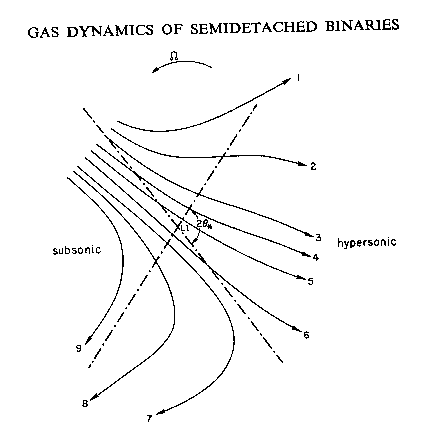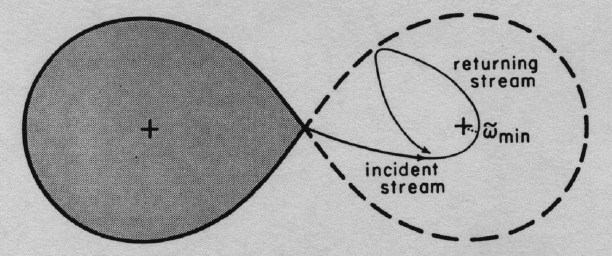
GAS DYNAMICS OF TIDAL STREAMS
Lubow & Shu (1975) derived many of the basic properties of the tidal stream using an analytic approach based on the fact that the sound speed is much smaller than the orbital velocity at the L1 point.

The flow near the L1 point.
The dashed lines show the Roche surface.
The strong pressure gradient between the mass-losing star on the left
and the empty Roche lobe on the right drives a transonic flow through the
L1 point: a tidal stream.
If the accreting star is sufficiently small, the stream will not directly strike the star. The returning stream will strike the incident stream. Over time, the orbiting gas will circularize into a Keplerian orbit. Conservation of angular momentum implies that the gas will be "trapped" in an accretion ring.

Lubow & Shu (1976) showed that the stream is NOT in vertical hydrostatic equilibrium. Because the stream flows ballistically, it will be several times thicker than the outer edge of the accretion disk.